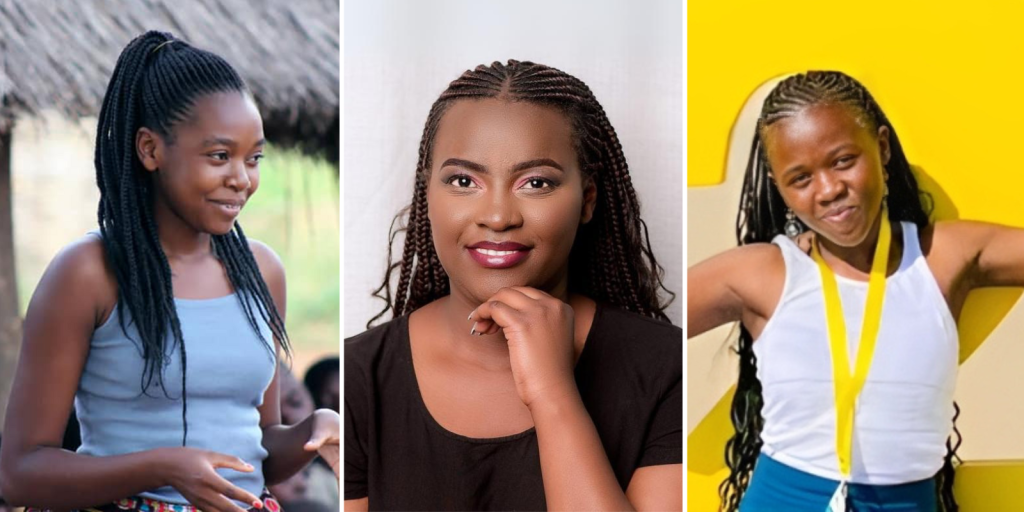International Youth Day: Helping young people realise their SRHR
 12 August 2024
12 August 2024

Make way for young people! For today’s International Youth Day, we are the celebrating the crucial role that young people play in the Make Way programme. In Make Way, we strive to ensure that everyone can realise their sexual and reproductive health and rights (SRHR), especially minoritised young people. We work with and for young people to understand their lived realities, applying these learnings to our intersectional SRHR advocacy work.
To mark the moment, we interviewed three Make Way youth representatives who are paving the way for youth: Bertha Chulu (Zambia), Elizabeth Warindi (Kenya) and Vilda Atieno (Kenya). We discussed their salient roles in Make Way and their thoughts on the key issues that prevent young people from realising their SRHR. With this year’s theme ‘From Clicks to Progress: Youth Digital Pathways for Sustainable Development’, we also dive into the digital tools and platforms that the youth representatives in Make Way utilise to improve SRHR for all.

Make Way youth representatives (left to right) Vilda Atieno, Bertha Chulu and Elizabeth Warindi.
What does it mean to be a youth advocate in the Make Way programme?
Bertha:
“Being a youth advocate in the Make Way programme means having a platform to share authentic thoughts and experiences of young people. It is also an opportunity to grow and expand my knowledge in intersectional programming.”
Warindi:
“It means being part of a network of ambitious young people with a vision to advance intersectionality in health equity and justice, especially in sub-Saharan Africa. As youth advocates, we are continually learning from one another. We also receive support from the programme in our SRHR advocacy work – building us into experienced advocates for now and the future.”
Vilda:
“As youth advocates, we are given opportunities for youth voices to not only be heard at the table, but also given intentional opportunities to meaningfully participate, learn from mentors and grow for future advocacy.”
What are the particular SRHR issues facing youth? Why is it important for youth to be involved in realising SRHR?
Bertha:
“Teenage pregnancies, child marriages and sexual infections are predominant among many young people. I strongly believe that the solution to these problems are young people themselves since they are most aware of their lived realities and the solutions needed to resolve their issues. Youth are needed to lead this process and participate in reaching their peers with high impact interventions that improve reproductive health outcomes among this age group.”
Warindi:
“Young people in Africa need to be at the forefront in advocating for SRHR in their communities. This is because SRHR related issues such as female genital mutilation, HIV and other STIs, teenage pregnancies and the unmet need for contraception affect them most adversely. According to the Kenya Demographic and Health Survey 2022, the rates of female genital mutilation in Kenya are at 15%, teenage pregnancy at 15% and the unmet need for family planning at 14%. The survey further highlights poverty and lack of education as the leading factors that contribute to these challenges. Young people, as the future of their communities, need to lead the charge to counter these challenges and pave the way for future generations.”
Vilda:
“We cannot address the challenges that affect young people, before discussing with them possible solutions to their issues. As Warindi has shared, the latest Kenya Demographic Health survey 2022 reports high rates of teenage pregnancy and unmet family planning needs in Kenya. It is also indicated clearly that youth with compounding vulnerabilities, such as girls and women with disabilities, are often at a double risk of experiencing these challenges. For example, issues like sexual consent even by older girls (18 and above) with disabilities have been neglected. Thus there are high cases of sexual and gender-based violence (SGBV) among women and girls with disabilities.”
How can digital technologies help improve SRHR for all?
Bertha:
“Now more than ever, the world is very connected through digital platforms. A huge number of young people my age are using the internet to stay connected and learn new trends. Since this is one of the cool ways of learning and interacting, digital technologies therefore serve as very good platforms to disseminate accurate information about SRHR that will save lives. It is also a tool that can be used to influence policy by calling out for policy reviews to fill the gaps that hinder young people’s access and uptake of SRHR services. Our leaders are online, they watch what we do and they can see what we need. Digital technologies make us interact with them at great ease.”
Warindi:
“Digital technologies can be used to provide education, to organise and for tracking SRHR conversations and actions faster. One of the hindrances of realising SRHR is lack of education on topics like contraception and safe sex. Digital technologies are increasingly being used to relay this information to young people. In terms of organising, it is faster to organise online to call for rights and services, examples being the #EndFemicideKe movement on X and the protests that followed to raise awareness on the murder of young women. These are strategies that can be used to also organise and agitate governments to provide comprehensive SRHR to their citizens. Lastly, digital technologies can be used to track conversations and opposition on SRHR, providing crucial information to the movement.”
What digital tools and platforms do you employ in the Make Way programme?
Bertha:
“One of our favourite activities as youth advocates in Make Way is to produce and co-host the Make Way for Youth podcast. This podcast offers a space to break taboos, normalise conversations on SRHR and provide inspiring stories into the work of SRHR youth advocates, religious leaders, policymakers and civil society actors! It is a great platform to share knowledge, best practices and network with organisations in the region. Another valuable digital space are X spaces where various SRHR topics are unpacked to increase awareness on intersectionality in SRHR programming. We are soon going to announce our upcoming webinar series with over 15 regional organisations all working in SRHR.”
Vilda:
“For the purpose of realising SRHR for all, we embrace different digital platforms to ensure that no one is left behind. For example, some youth with different disabilities might not be able to learn firsthand from our podcast. Thus we have a diverse array of other digital platforms and tools including webinars, toolkits and X Spaces, which also facilitate our advocacy work.”
Any final words?
Bertha, Warindi & Vilda:
“Let us celebrate the digital contributions of youth as they collaborate to change the lives of their fellow young people. Make way for young people in digital spaces!”



